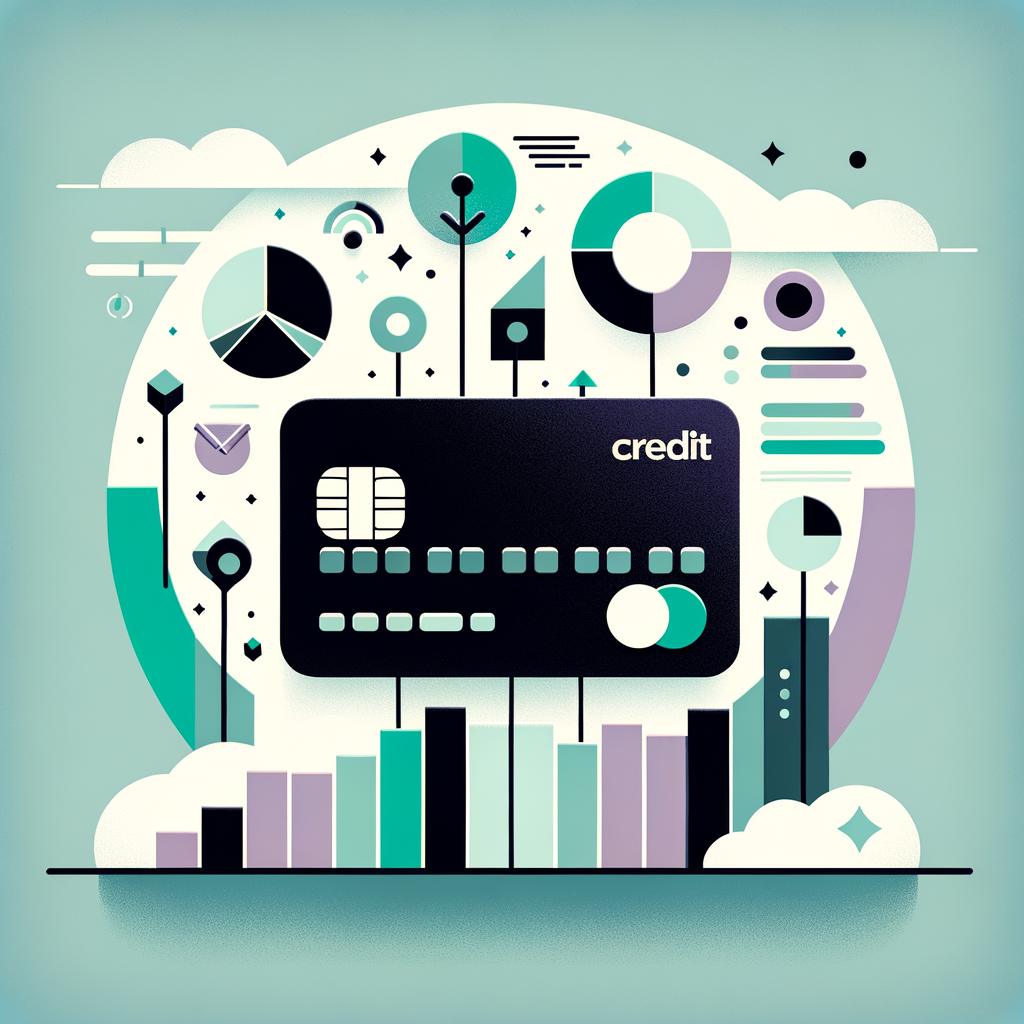Advertiser Disclosure
Last update: November 17, 2024
8 minutes read
Secured vs. Unsecured Credit Cards: Pros, Cons, and How to Decide
Learn the difference between secured and unsecured credit cards, make informed choices, and improve your financial journey.

By Brian Flaherty, B.A. Economics
Edited by Rachel Lauren, B.A. in Business and Political Economy
Learn more about our editorial standards



By Brian Flaherty, B.A. Economics
Edited by Rachel Lauren, B.A. in Business and Political Economy
Learn more about our editorial standards
Ever scratched your head at the terms secured and unsecured credit cards? You're not alone. They’re confusing terms, but the key is understanding one vital difference: secured credit cards require an upfront deposit, while unsecured credit cards do not. In this blog post, we break down the ins and outs of these two types of credit cards, so you can make an informed decision about which one is best for you.

Key takeaways
- Secured credit cards require an upfront deposit and are great for building credit
- Using either type of card responsibly can help you establish a good credit score
- Unsecured cards don't require a deposit and are the go-to for those with a solid credit history
Secured vs unsecured credit cards
So, what's the difference between secured and unsecured credit card options? It boils down to this: secured credit cards demand an upfront deposit (which often acts as your credit limit) and are a favorite for people looking to establish or rebuild credit.
On the other hand, unsecured credit cards don't need a deposit and typically feature higher credit limits and potentially lower interest rates and fees. But getting approved for these cards generally requires a good credit history.
What is a secured credit card?
A secured credit card acts as your training wheels on the road to credit-building. Like making a safety deposit before renting an apartment, you need to make a deposit to open a secured credit card account.
Usually, the deposit matches the card's credit limit. Deposits can range from $200 to upwards of $2500, so choose a secured card that matches your cash situation.
Even though parting ways with a deposit might sting a little, using a secured card responsibly is a great way to establish, build, or rebuild your credit standing. But remember, just like any credit card, approval isn't guaranteed, and paying on time and in full is the best way to dodge fees and save on interest.
So, can you switch a secured credit card to unsecured? Yes, you can, and many issuers offer secured cards that turn into unsecured ones after demonstrating responsible use.
You can even get your deposit back as a statement credit. Learning how to make a secured credit card unsecured can be a significant step in your credit journey.
How is an unsecured credit card different?
Typically known as a traditional credit card, an unsecured credit card doesn't ask for deposits or collateral. It's the more common type you'll encounter, allowing you to borrow funds from your bank to make purchases, transfer high-interest balances, and get cash advances.
While I’ve always used unsecured credit cards in my life, I have some friends who have benefited from building their credit with secured credit cards. Over time, by practicing good money management and spending habits, they were able to graduate to a traditional card too.
It just goes to show you that both secured and unsecured cards can be valuable tools, depending on your situation. Unsecured cards often come with a variety of perks, like reward points, cash back, or travel benefits, which can add value to your purchases.
Some of the top unsecured credit cards offer excellent rewards and benefits. If you're rebuilding credit, you might be interested in the best unsecured credit cards to rebuild credit or looking for the easiest unsecured credit cards to get.
The key differences between secured and unsecured credit cards
What sets these 2 card types apart? Let's take a look at a few differences:
- Security deposit: The main difference is that secured cards require a security deposit while unsecured cards don’t.
- Interest and fees: Generally, interest rates and fees are lower with unsecured cards.
- Credit limits: Typically, the initial deposit determines a secured card's credit limit. However, there are exceptions, like the Capital One Platinum Secured Credit Card, where a $200 credit limit could come with a deposit as low as $49.
- Rewards potential: Unsecured cards often offer better rewards and perks. Though it's not unheard of for secured cards to offer perks, they're usually less common.
- Approval requirements: Secured cards are generally easier to qualify for, even if you have poor or no credit history, while unsecured cards require a good to excellent credit score.
Despite these differences, secured credit cards work similarly to unsecured cards. You use both types to make purchases, and at the end of the billing cycle, you receive a statement detailing your account activity.
Building credit with a secured vs. an unsecured credit card
Whether you have a secured or unsecured card, credit-building works the same. Regardless of the card type, issuers report your payment history and card balance to credit bureaus. This information helps credit bureaus calculate your credit score.

TuitionHero Tip
While secured cards are a great starting point for people looking to establish their credit, note that other factors can influence credit-building, like credit mix and age.
How do I choose between secured and unsecured credit cards?
Answering this question depends on your unique financial situation. It helps to weigh your financial needs and goals against your credit status when deciding between a secured or unsecured card. Pre-approval or pre-qualification tools can help narrow down the best card for your needs.
Secured cards are usually good for people with little credit history or who are looking to rebuild their credit history - sometimes, a secured card may be your only option. Keep in mind, the process of finding a card that caters to your needs isn't always quick, as each lender operates with its own set of requirements.
If you have a fair to good credit score, you might qualify for an unsecured card with favorable terms. However, if your credit score is low or nonexistent, starting with a secured card can be a practical first step.
Pre-approval or pre-qualification tools can help narrow down the best card for your needs. Some lenders offer pre-approval for unsecured credit cards, allowing you to check your eligibility without impacting your credit score.
Compare private student loans now
TuitionHero simplifies your student loan decision, with multiple top loans side-by-side.
Compare Rates
Dos and don'ts of using secured and unsecured credit cards
When you're trying to pick between secured and unsecured credit cards, knowing what to do and what to avoid is super important. Your choice can really affect your finances. Here's an easy guide to help you figure out what's what.
Do
Research and compare card options.
Check your credit score beforehand.
Understand the deposit requirement for secured cards.
Use pre-approval tools to assess card suitability.
Don't
Apply for a card without understanding the terms.
Forget to consider fees associated with the card.
Ignore the impact on your credit score.
Max out your credit limit without repayment plans.

Advantages and disadvantages of using secured and unsecured credit cards
When weighing your options between secured and unsecured credit cards, understanding their pros and cons can help guide your decision toward what's best for you.
- Build or rebuild credit score: With responsible use, both cards can help boost your credit score over time.
- Opportunity to level up: Act responsibly with your secured card and you might earn an upgrade to an unsecured card.
- Available perks: Unsecured cards often come with rewards systems like cash back, points, or miles.
- Lower initial deposit: Some secured cards, like Capital One's Platinum, offer the chance to get a higher credit limit for a lower initial deposit.
- Upfront deposit: Secured cards require you to make a deposit upfront, which might not be great if you struggle with liquidity.
- Rising expenses: A higher credit limit, often seen with unsecured cards, can lead to overspending if not carefully managed.
- Possible fees: Both card types can come attached with interest and fees which can get out of hand if not kept under control.
- Approval isn't guaranteed: Despite your best financial habits, approval for either card type might not be a given, and largely depends on each lender's policies.
Alternative options if you can't get approved for a secured or unsecured credit card
If you're unable to qualify for either type of credit card, consider these alternatives to help build your credit:
- Become an authorized user: Ask a family member or close friend to add you as an authorized user on their credit card account. This allows you to benefit from their positive credit history.
- Credit-builder loans: Some financial institutions offer small loans designed to help you build credit. You make fixed payments over a set period, and the lender reports your payment history to the credit bureaus.
- Secured personal loans: Similar to secured credit cards, these loans require collateral but can help you establish a credit history.
- Store credit cards: Retail store cards may have more lenient approval requirements, though they often come with higher interest rates.
Frequently asked questions (FAQ)
Yes, some secured cards come with perks, but they aren't as common as with unsecured cards. Nonetheless, if you're starting with a low credit score, your focus should be on improving the score, with rewards acting as a nice extra.
Yes. Over time, with responsible usage, many lenders allow you to upgrade from a secured card to an unsecured card. You could get back your deposit as a statement credit or a refund if you choose to close the account.
The number of credit cards suitable for an individual varies based on their financial situation and credit management skills. While there's no fixed 'right' number, remember not to apply for several credit cards at once, as it can impact your credit score.
Applying for a new credit card typically results in a hard inquiry on your credit report, which may slightly lower your credit score temporarily. However, the potential benefits of building credit with responsible use can outweigh the initial impact.
Final thoughts
Before applying for a credit card, it's important to think carefully and learn about your options. Secured and unsecured credit cards are alike in some ways, but the big difference is the deposit needed for a secured card.
When you're deciding on a card, take the time to compare what's out there. Pre-approval tools are a good way to see if a card is right for you without any risk. Remember, this isn't a race; it's more like a journey. And with the right card by your side, you're ready for success. If you need more help on your money journey, check out TuitionHero.
Source
Author

Brian Flaherty
Brian is a graduate of the University of Virginia where he earned a B.A. in Economics. After graduation, Brian spent four years working at a wealth management firm advising high-net-worth investors and institutions. During his time there, he passed the rigorous Series 65 exam and rose to a high-level strategy position.
Editor

Rachel Lauren
Rachel Lauren is the co-founder and COO of Debbie, a tech startup that offers an app to help people pay off their credit card debt for good through rewards and behavioral psychology. She was previously a venture capital investor at BDMI, as well as an equity research analyst at Credit Suisse.
At TuitionHero, we're not just passionate about our work - we take immense pride in it. Our dedicated team of writers diligently follows strict editorial standards, ensuring that every piece of content we publish is accurate, current, and highly valuable. We don't just strive for quality; we aim for excellence.
Related posts
While you're at it, here are some other college finance-related blog posts you might be interested in.
Shop and compare student financing options - 100% free!

Always free, always fast
TuitionHero is 100% free to use. Here, you can instantly view and compare multiple top lenders side-by-side.

Won’t affect credit score
Don’t worry – checking your rates with TuitionHero never impacts your credit score!

Safe and secure
We take your information's security seriously. We apply industry best practices to ensure your data is safe.
Finished scrolling? Start saving & find your private student loan rate today
Compare Personalized Rates




